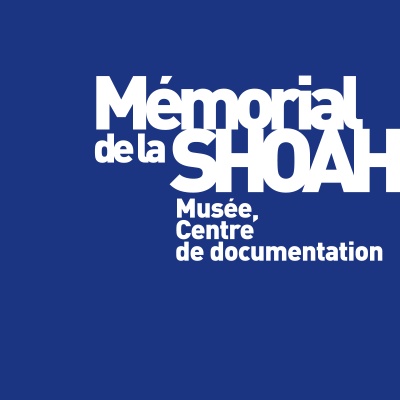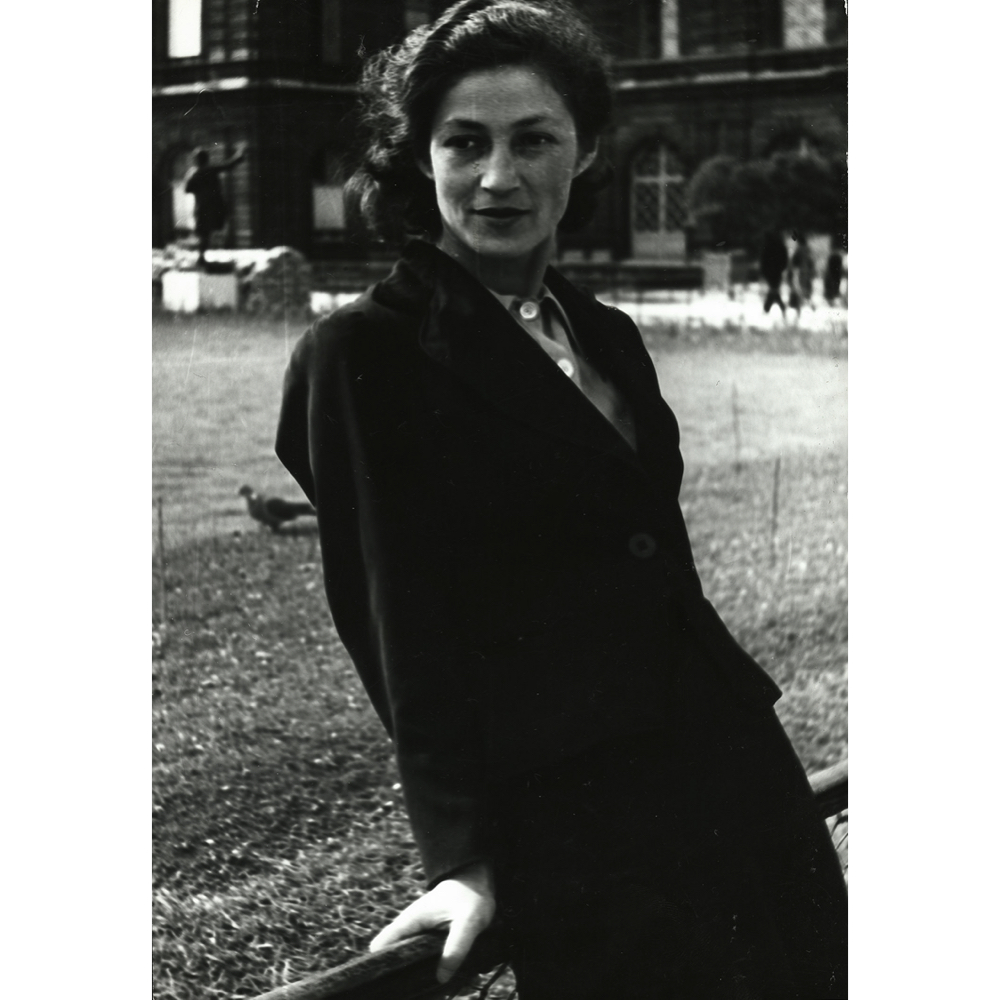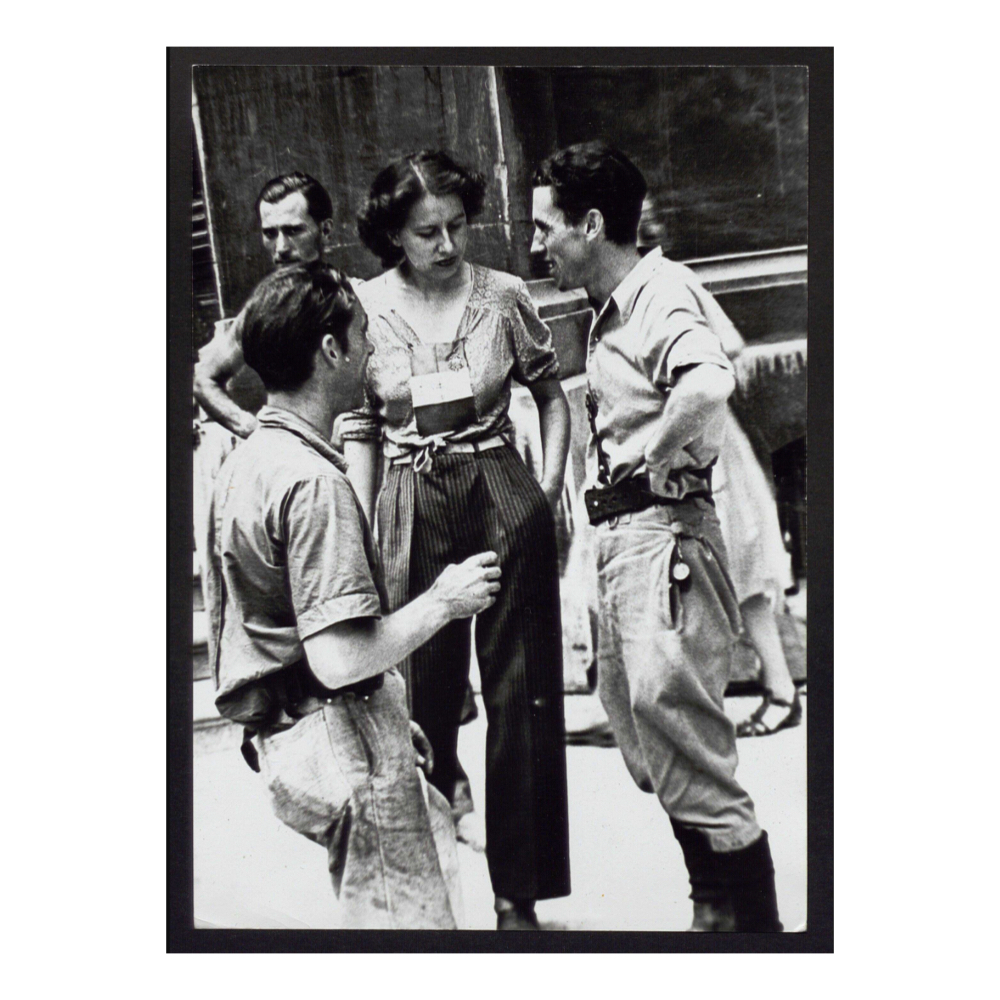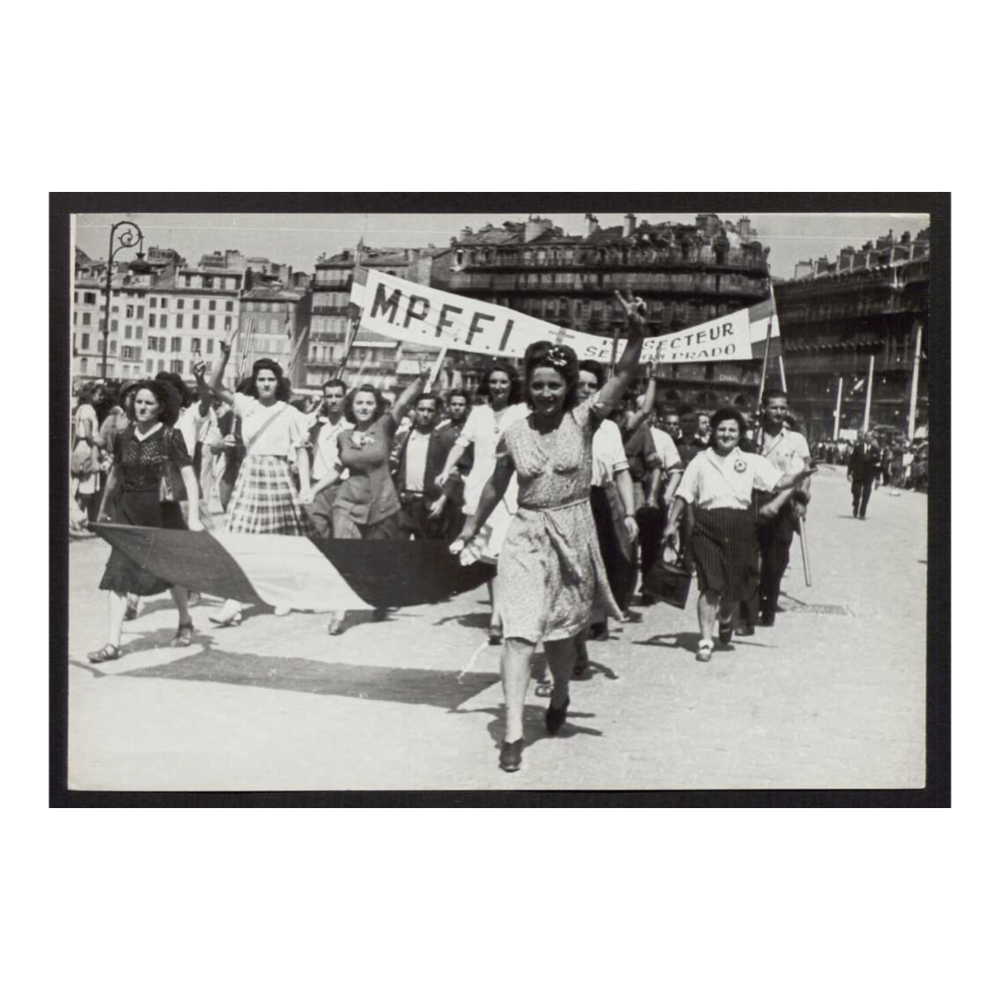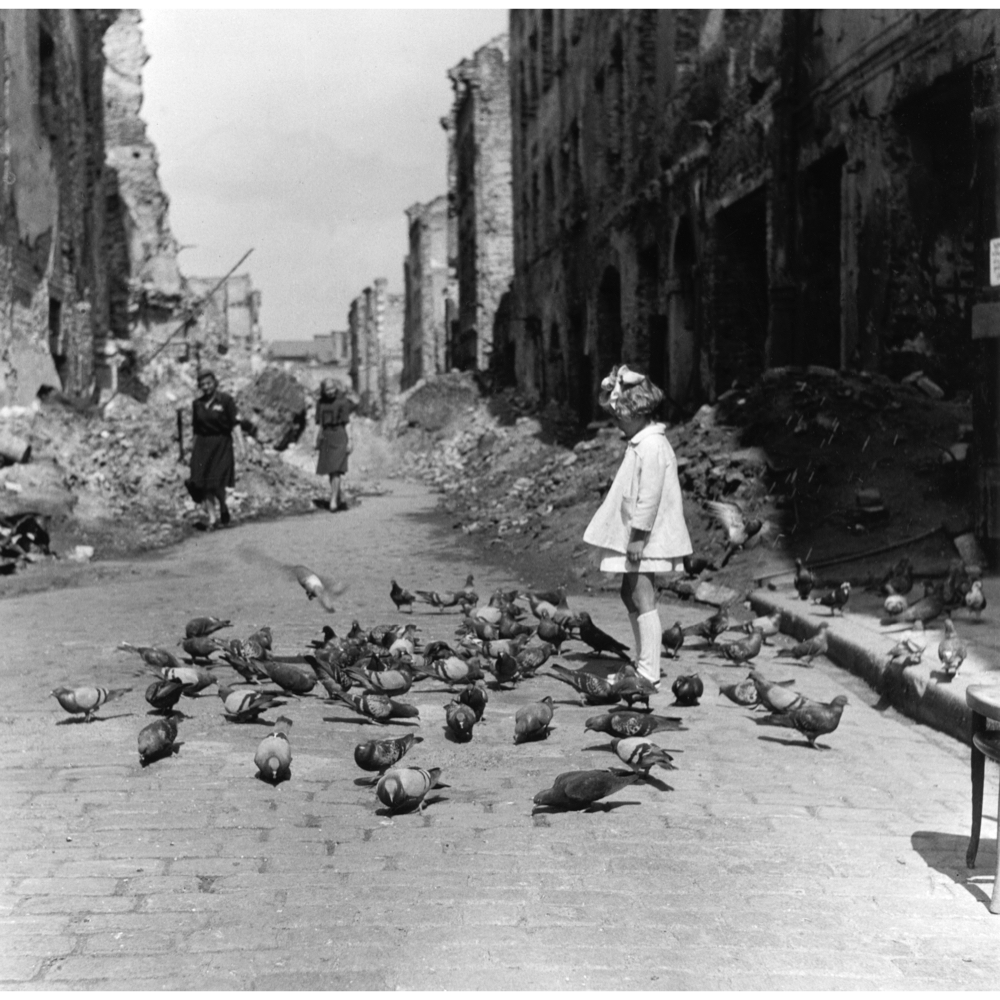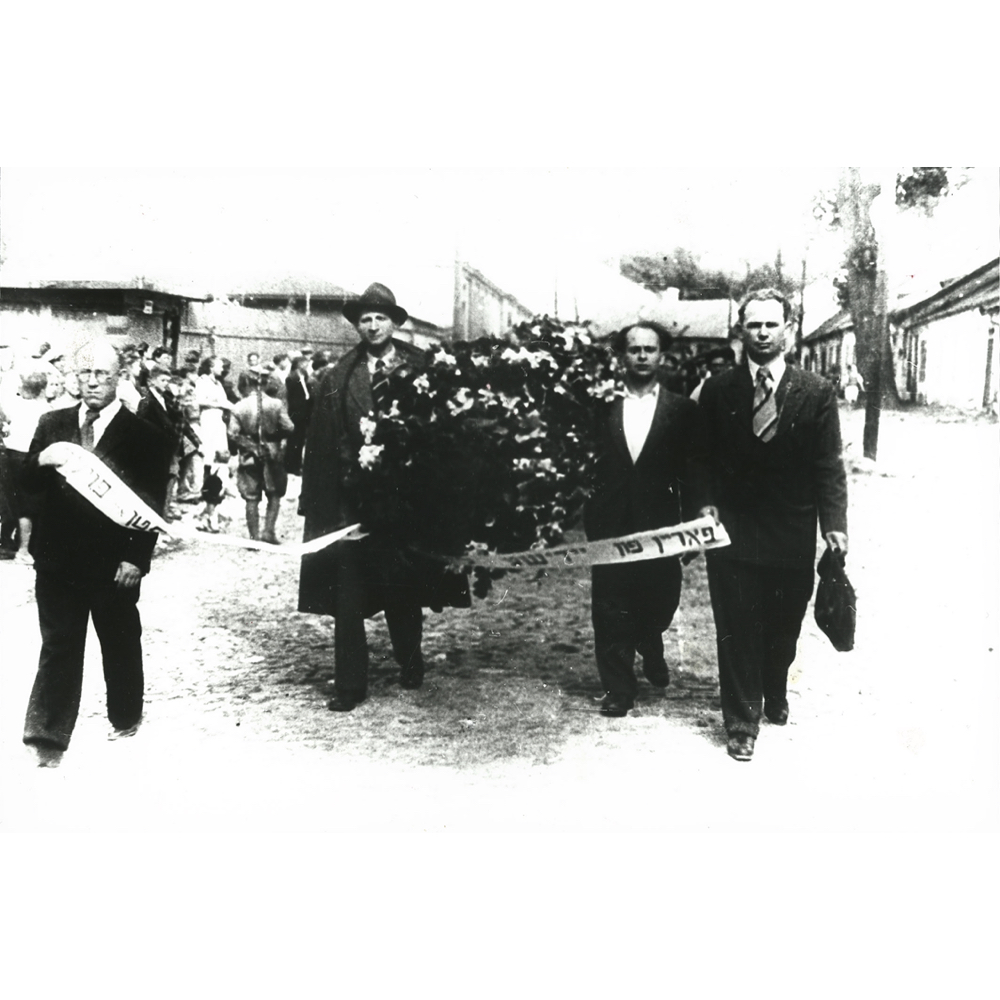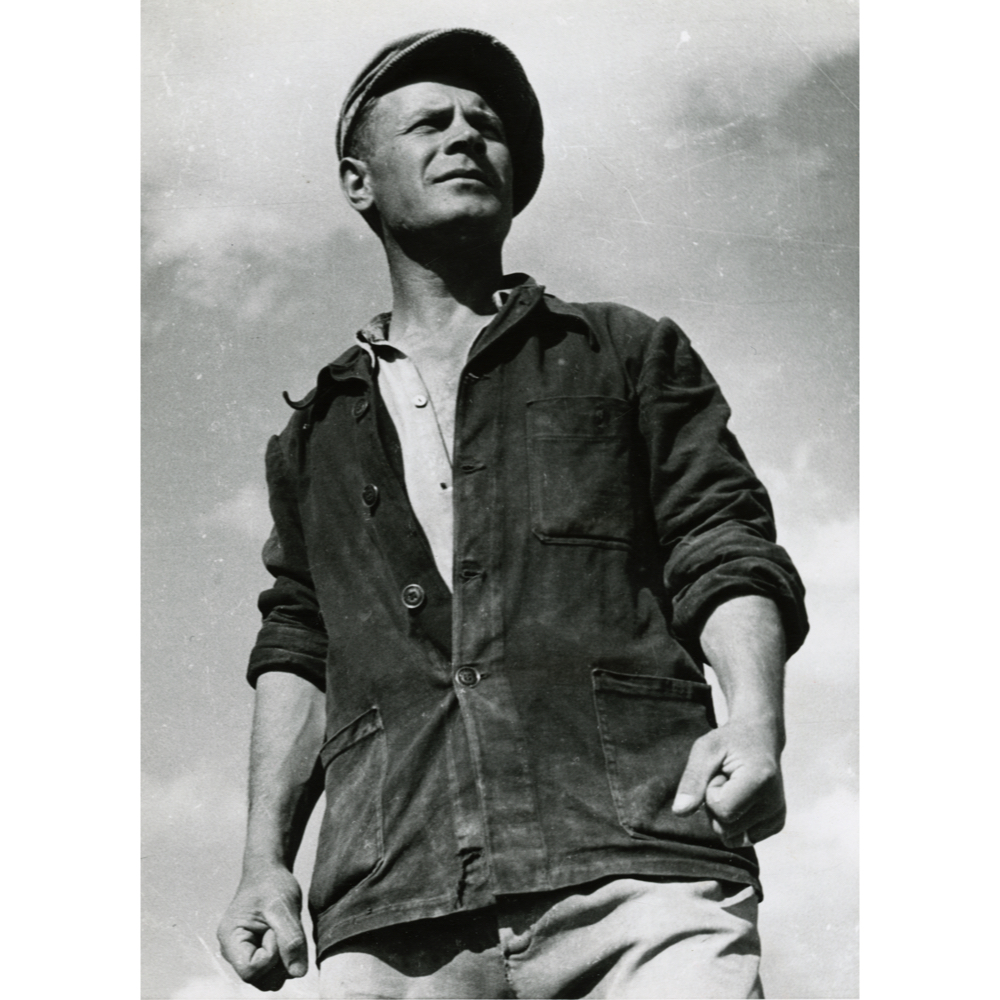Exhibition
«Julia Pirotte, photographer and resistant»
#expojuliapirotte
Thursday, March 09, 2023Seyday, January 07, 2024
"People ask me how I get with this device to capture images that are exhibited worldwide (...). When I feel a heartbeat, I know it will be a good photo." – Julia Pirotte
Who is Julia Pirotte?
Julia Pirotte, born Golda Perla Diament on August 26, 1907, grew up between Końskowola and Lublin in Poland in a poor Jewish family, her father is a minor. Arrested at 17 for her involvement in the Polish communist youth, she spent four years in prison. In 1934, helped by the organization of International Red Aid, she fled her country to join her sister Mindla, a refugee in France.
Fallen ill, she stops in Belgium where she works as a worker and marries the trade unionist Jean Pirotte. In Brussels, she attends evening classes at the journalism school as well as training in photography. In 1938 and 1939, she carried out her first assignments as a photo-journalist: an investigation on the Polish miners in Charleroi for a trade union magazine as well as a report to the Baltic countries for the press agency Foto WARO.
Left: Exchange of pots in the square. Lithuania, 1938-1939. © Julia Pirotte/Jewish Historical Institute in Warsaw.
On the right: Julia Pirotte on a bench by Linda Wolf, Cour ENSP. Arles, France, 1982, Véronique Vercheval.
Resistant
In May 1940, following the invasion of Belgium by Nazi Germany, she takes the path of exodus. With friends met during the trip, she decides to settle in Marseille because of the factories present in the city. She begins to work in an aviation factory and as a photographer on a private beach. From 1942, she was hired as a photojournalist for the local press: Dimanche illustré, la Marseillaise, le Midi Rouge, among others.
His reports testify to the precarious living conditions of the inhabitants of the Old Port, the situation of the Jewish women and children interned at the camp of Bompard and the operations of the maquis. She joins the Resistance very early, just like her sister Mindla. Liaison agent for the FTP-MOI, she transports leaflets, weapons, and makes fake papers. On August 21, 1944, she takes part in the insurrection of Marseille and documents with her photographs the different moments of the day.
Left: Girl holding a cup, Bompart camp, Marseille (Bouches-du-Rhône). France, 1942. Memorial of the Shoah/Julia Pirotte coll.
In the center: Marseille Uprising. Marseille, France, August 21, 1944. © Julia Pirotte/ La contemporaine. Bibliotheque. Archives. Museum of the contemporary worlds.
On the right: Quartier du Vieux Fort. The French regular army has arrived. Marseille, France, August 21, 1944. Coll. The contemporary, Library, archives, museum of contemporary worlds.
After the war
Julia Pirotte returns to Poland, a country in the midst of reconstruction. In 1946, she is one of the only photographers present in Kielce just after the pogrom, her report is a poignant testimony on the still virulent anti-Semitism in her country. In the following months, she accompanied the repatriation convoys of Polish minors from France. In 1948, she covered the Wroclaw World Congress of Intellectuals for Peace which included the participation of Pablo Picasso, Irène Joliot-Curie, and Aimé Césaire, whose portraits she painted with a touch of humanism. At the same time, she is co-founder and director of the Agence de photographie militaire (WAF, 1946-1948).
In 1957, Julia Pirotte went to Israel notably to experience the collectivist life of the kibbutz. Back in Poland, she continues to produce reports for the Polish press, but her activity is significantly reduced. From the 1980s, his work as a photographer began to be recognized and his photographs are exhibited in many cities: New York, Arles, Stockholm, Charleroi, Paris, Warsaw, Bratislava among others. On 15 February 1996, France awarded her the title of Chevalier des Arts et des Lettres. She died on 25 July 2000 in Warsaw.
Left: A little girl in a ruined street. Warsaw, Poland, 1947. © Julia Pirotte/Museum of Photography in Charleroi.
In the center: Burial of the victims of the pogrom of Kielce (voivodship of Holy Cross). Poland, July 1946. Coll. Shoah Memorial/Julia Pirotte.
On the right: 'The new man or the power of the worker'. Warsaw, Poland, 1947. © Julia Pirotte/Museum of Photography in Charleroi.
Portraits
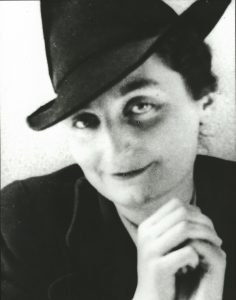 Suzanne Spaak (Brussels 1905 – Fresnes 1944)
Suzanne Spaak (Brussels 1905 – Fresnes 1944)Member of the Franco-Belgian section of the intelligence network l'Orchestre rouge, and one of the leaders of the National Movement against Racism (MNCR), she organizes and coordinates actions to rescue Jewish children. Arrested by the Gestapo on November 8, 1943, she was shot on August 12, 1944, in the prison of Fresnes. She played a decisive role in Julia Pirotte’s career as a photographer, notably by offering her camera.
Photo: Portrait of Suzanne Spaak by Julia Pirotte. Brussels, Belgium, 1939.
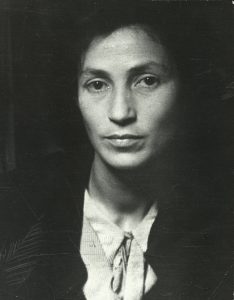
Mindla Diament (1911 – 1944)
Sister of Julia, a refugee in pre-war France, in 1941, she joined the resistance within the FTP-MOI of which she became one of the liaison agents. Arrested in Chalon-sur-Saône, she was deported to Germany on December 3, 1942 and guillotined on August 24, 1944.
Photo: Mindla Diament photographed by her sister Julia Pirotte. © Julia Pirotte/Memorial de la Shoah.
Curator: Caroline François, in charge of exhibitions, and Bruna Lo Biundo, independent researcher
Graphic design: Estelle Martin.

